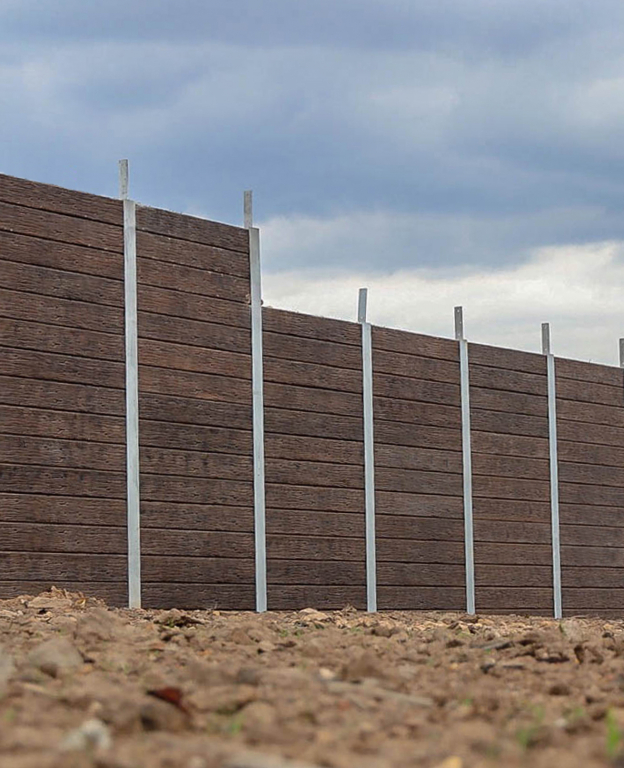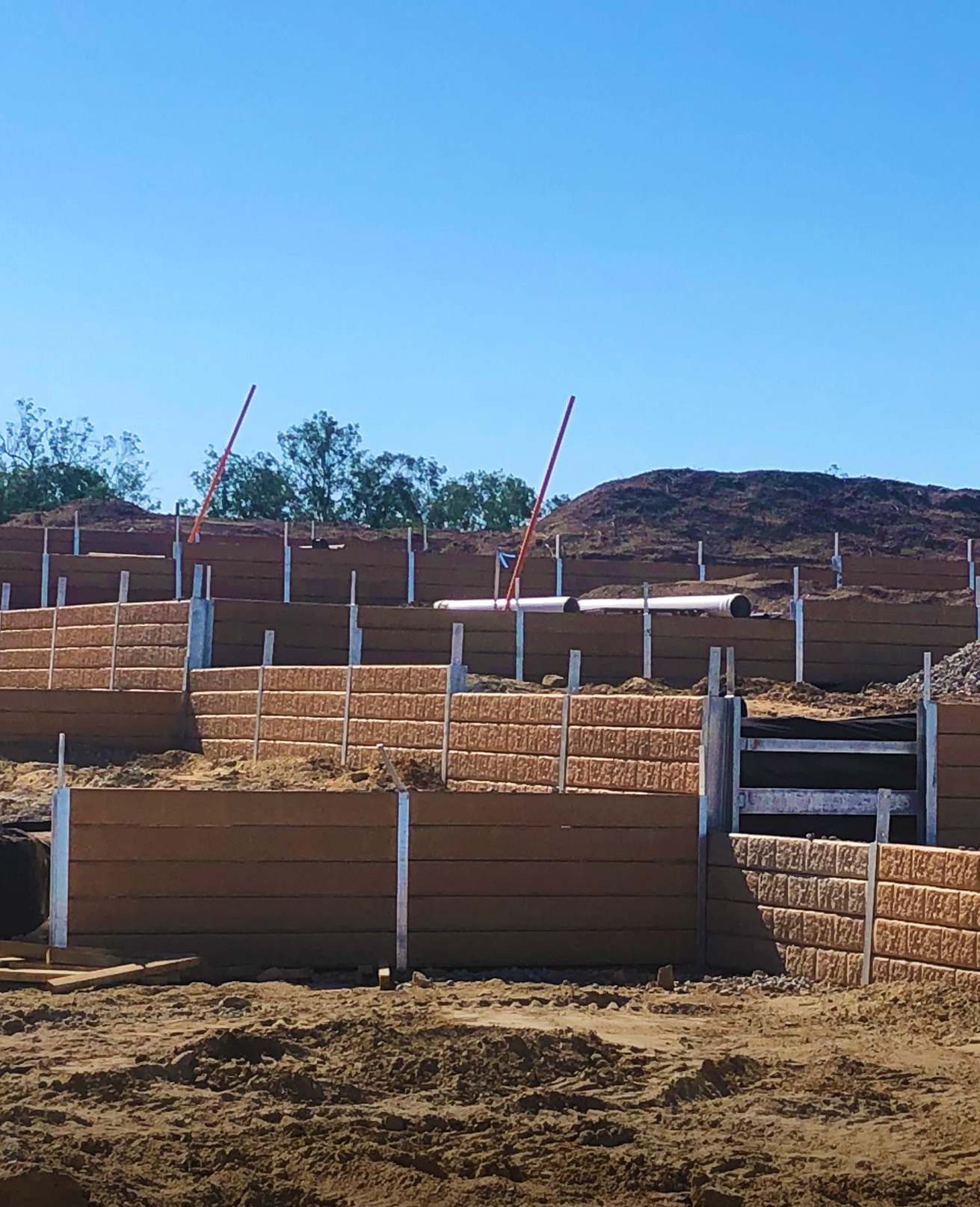Engineered Sleepers & Australian Standards
QPro Concrete Sleepers have all undergone a structural engineering design for cantilever retaining wall systems comprising of embedded galvanised universal post and pre-cast concrete walers as detailed in our Technical Design Guide.
The structural design of the steelwork posts and concrete sleepers is capable of supporting design loads in accordance with the following Codes of Practice:
- AS4678-2002 Earth Retaining Structures
- AS/NZ1170.0-2002 Structural design actions – General principles
- AS/NZ1170.0-2011 Structural design actions – Wind actions
- AS3600-2009 Concrete structures
- AS/NZ2312-2002 Guide to the protection of structural steel against atmospheric corrosion by the use of protective coatings.

FAQS
Efflorescence is the formation of salt deposits on or near the surface of concrete resulting in a change in the appearance of the surface of the product. Efflorescence deposits show up less in lighter coloured concrete and over time will become less extensive.
QPro Concrete Sleepers can be cut to achieve specific sizes when required. It is recommend that you only use equipment that is designed to cut concrete and reo. It is also best practice to treat the exposed reo with either cold galvanised spray or solvent based bituminous paint.
Why the Reo? It has been calculated that the initial 350mm of subterranean post bear the load of a retaining wall. Beyond this point the purpose of the reo is to bind to the concrete footing. Depending on the wall height the size and number of reo will vary.
QPro Concrete Sleepers are manufactured to a strength of no less than 40MPA and contain reo bars. All Qpro Concrete sleepers are 200mm high x 75mm thick and come in various lengths.
Reinforced concrete elements crack wherever the tensile stress in the concrete reaches the tensile strength of the concrete. This stress in the structure can occur at any location and may be caused by a number of factors, including applied loads, restrained shrinkage, temperature changes (including early-age cooling), support settlement and so on. Flexural cracks, caused by bending, occur at the tensile face when the fibre tensile stress reaches the tensile strength of the concrete. It should be noted then that the result of hairline cracks in a concrete member would not be detrimental its overall integrity provided the minimum reinforcement requirement has been met. This requirement ensures that a lightly loaded member has an adequate reserve of strength if unexpected cracking occurs and applies to tension members, as well as flexural members.
contact your local council
COUNCIL REQUIREMENTS
When planning to build a retaining wall it is always recommended to contact your local council should you have any questions or concerns.
- Brisbane City Council Planning approval for building a retaining wall
- Ipswich City Council Information pack for retaining walls.
- Gold Coast Council – Earthworks retaining walls
- Toowoomba – Building approvals and heights for retaining walls
- Rockhampton Region – Building approval
- Moreton Bay Regional Council – Building approal
- Logan City Council – Building Approvals Fact Sheet
- Redlands City Council – Minor building projects
- Sunshine Coast Council – Building a retaining wall regulations

RESOURCES
Our Technical
Design Guide
QPro Concrete Sleepers have all undergone a structural engineering design for cantilever retaining wall systems comprising of embedded galvanised universal post and pre-cast concrete walers as detailed in our Technical Design Guide.

